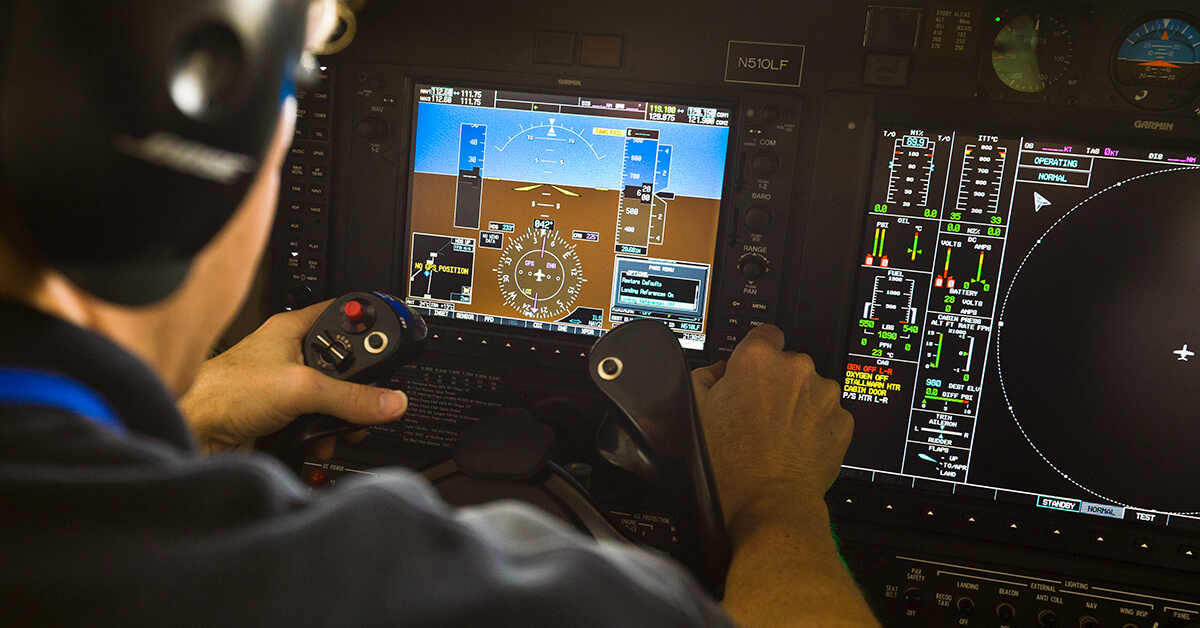
Aug. 12, 2020
One of the most promising – and perhaps controversial – emerging technologies in business aviation involves simplified vehicle operations (SVO) to reduce pilot workload on the flight deck. A recent NBAA News Hour webinar examined how SVO may alter future aircraft designs, pilot training requirements and aircraft and systems certification procedures.
A panel of experts moderated by Robotic Skies CEO Brad Hayden, who also chairs NBAA’s Emerging Technologies Committee, examined the many aspects of SVO that go beyond simply controlling an aircraft’s flight movements. Truly simplified operations also involve using automation and human factors best practices to reduce the level of training and knowledge required to safely operate any aircraft system, including navigation, communication and environmental controls.
“SVO is really about applying technologies that can perform better and more reliably than pilots,” said Dustin Kilgore, aviation systems team leader at Garmin. “We view SVO as a framework that allows automation and technology to either replace or reduce the pilot training required to safely and efficiently operate an aircraft.”
Such systems are considered essential for development of near-future aircraft, including unmanned aircraft systems and advanced air mobility vehicles. While many of the technologies to enable SVO are already available, implementation will also require a fundamental rethink of the role of such automated flight systems.
“Automation is a piece of SVO, but it’s a different design philosophy,” said Ben Klein, general counsel and head of government affairs for Skyryse, which is developing SVO pilot augmentation systems using a Robinson R44 helicopter testbed. “SVO needs to be certified fail-safe; we’re never going to have a reversionary mode, where a pilot who’s been trained to be an SVO pilot all of a sudden has to know how to be a traditional pilot.”
SVO also will require some new regulatory thinking, and it’s not yet known how the FAA will handle this. Lowell Foster, director for global innovation and engineering at the General Aviation Manufacturers Association, pointed to the possibility of an SVO-specific pilot certification, similar to existing centerline-thrust limitations for pilots operating multi-engine aircraft like the Cessna 337 Skymaster and Eclipse 500.
“If you get an SVO license, there’s no expectation that you have to be proficient to fly a regular airplane,” said Foster.
While the panelists acknowledged that pilots have sometimes been reticent about accepting new technologies that ultimately benefited safety, such as whole-aircraft parachute systems, all agreed the role of SVO is to help pilots perform their duties more safely and efficiently. Perhaps most important, it is intended to augment, not replace, humans on the flight deck.
“I fly a 1958 aircraft with conventional controls, and I’d like it to remain that way,” Klein said. “To make sure people don’t get nervous here … there’s always going to be a place for pilots who want to fly and who love to fly aircraft with conventional controls.”


 International Business Aviation Council Ltd.
International Business Aviation Council Ltd.